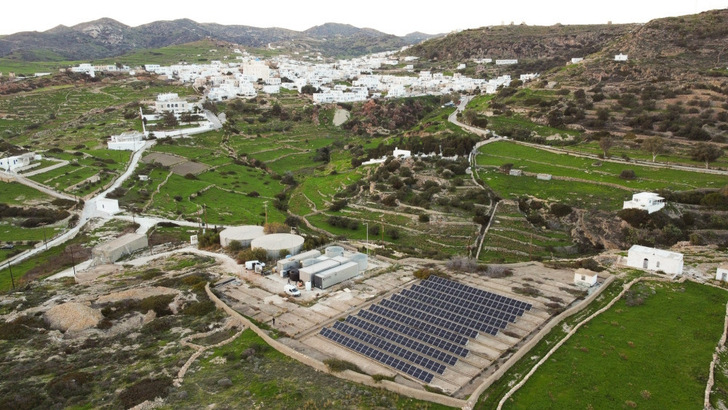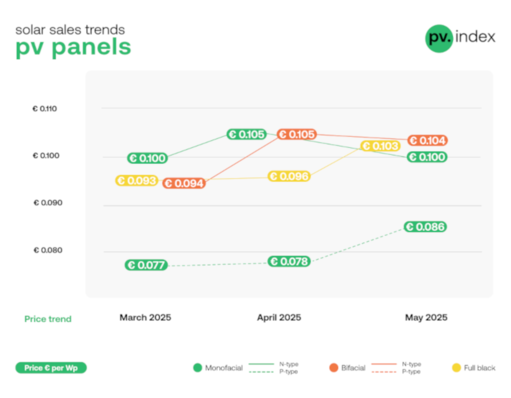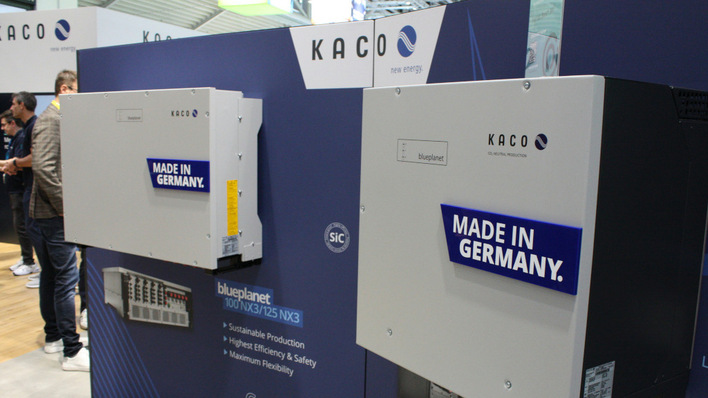Despite the global boom in PV installations, the supporting power infrastructure faces mounting pressure. Five key challenges are coming to the fore: securing supply chains, enabling clean energy consumption, ensuring grid stability, managing variable loads and controlling costs. Energy storage, as a cornerstone of power sector decarbonisation, is entering a rapid growth phase – one that could prove pivotal in addressing these structural issues.
Expert view – the three strongest solar energy trends in 2025
Here are ten key technological trends driving progress in solar and energy storage:
High density and high efficiency
With falling costs and growing local production of third-generation wide-bandgap semiconductors, inverters are increasingly using silicon carbide (SiC) and gallium nitride (GaN) components. Combined with advanced control algorithms, stronger computing performance and innovative thermal packaging, these developments are set to significantly raise both power density and system efficiency.
In the past decade, inverter single-unit power has advanced in major cycles every two to three years, with DC voltage now moving toward 2000V. Sungrow commissioned the world’s first 2000V DC PV system in China’s Shaanxi province, cutting Balance of System (BOS) costs by over 0.04 yuan (USD 0.55 cents) per watt compared to 1500V systems – setting a new industry benchmark for cost reduction and efficiency.
Expert view – as we rebuild the grid, we must rethink its management
As renewable energy penetration rises, grid-forming technologies are becoming critical for creating flexible, reliable and resilient power systems. Since 2006, Sungrow has led research in this area, developing core capabilities including flexible inertia support, suppression of wide-frequency oscillations, enhanced voltage ride-through, microsecond-level voltage construction, adaptive harmonic control, fast off-grid commissioning, seamless grid transitions, and black-start capability at the gigawatt scale.
Digitalisation and AI
Digitalisation and AI are revolutionising the entire lifecycle of PV plants, boosting both reliability and operational efficiency. Sungrow has utilised advanced AI training techniques for inverters to create a sophisticated AI-driven battery management system.
This system constantly tracks and analyses multiple parameters of battery cell states, such as temperature, current, voltage and pressure. By doing so, it enables real-time health assessments, offers early alerts for cells showing signs of potential issues, and prevents the onset of thermal runaway, significantly improving the safety and performance of PV installations.
Artificial intelligence: The key to transforming renewable energy systems?
Secure and reliable Systems
A 30-year system design lifespan is set to become a new trend and standard for future inverters. More than a dozen advanced designs and technologies integral to system security and reliability, including modular design, multi-tier active fault alarms, arc detection and shutdown mechanisms.
Alongside, Sungrow has invested in two large-scale, real-world energy storage system burn tests, each costing over 10 million yuan (approx. USD 1.4 million), to affirm the safety of its liquid-cooled energy storage system PowerTitan series. These tests serve to safeguard personnel, assets and operational safety, setting a new safety benchmark for the energy storage industry.
Topology innovation
Topology innovation plays a crucial role in enhancing power conversion efficiency. In 2018, Sungrow spearheaded a major R&D project and developed the world's first 6MW 35kV Solid State Transformer based (SST-based) PV inverter. This inverter replaced traditional low-frequency transformer with a high-frequency one, achieving an overall maximum efficiency of 98.5%. This is just one instance of how innovative topologies are continually evolving and being applied across various solar and storage applications.
For different global scenarios and grid conditions, system-level modeling and simulation capabilities are needed to mimic the performance of solar, wind, and storage systems in on-grid/off-grid and steady-state/transient processes. As simulation systems evolve, they will increasingly approximate real-world conditions, significantly shortening inverter and power system development cycles while reducing costs.
Virtual power plants
Virtual power plants (VPPs) leverage internet technologies to aggregate distributed PV, energy storage and loads into a unified entity for grid dispatch. VPPs optimise energy utilisation, promote clean energy consumption, reduce grid congestion and negative pricing, and enable control in patches for grid ancillary services, ensuring rapid response and grid stability. This significantly reduces grid construction and operational costs. By leveraging real-time monitoring and demand forecasting, VPPs can guide users to optimise their electricity consumption and thus enhance supply reliability.
The integrated management of source-grid-load-storage-carbon systems can promote large-scale clean energy integration, reduce curtailment and achieve clear carbon reduction goals. Sungrow is providing integrated solutions for the world’s largest 2.2GW wind-PV-storage-hydrogen multi-energy complementary microgrid project in Saudi Arabia. 2025 will mark the beginning of zero-carbon parks, with source-grid-load-storage-carbon integration becoming the preferred solution.
Green hydrogen, ammonia, and methanol
Global demand for green hydrogen is soaring, and renewable energy-based electrolysis represents a critical future pathway. Moreover, ammonia and methanol are becoming increasingly popular due to their ease of storage and transport. Decoupling power generation from hydrogen production systems allows for the remote production of hydrogen through power transmission.
Hydrogen production rectifiers, designed with fast dynamic response capabilities, are adept at managing the power fluctuations inherent in renewable energy sources. These features make them well-suited for use in large-scale renewable hydrogen production facilities and central hydrogen production stations.
(David Zhao/hcn)
Market for hybrid power plants in Europe still in the starting blocks









